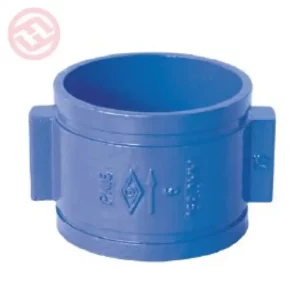While waterworks valves offer numerous benefits in various applications, they may also present some drawbacks depending on the specific requirements and conditions of the installation. Some potential drawbacks include:
- Limited compatibility: Waterworks valves are typically designed for use with water or wastewater systems and may not be suitable for other types of fluids or specialized applications. Using these valves with incompatible fluids or in non-standard applications could lead to performance issues or premature failure.
- Limited temperature and pressure ratings: Waterworks valves are generally designed to operate within specific temperature and pressure ranges common in water distribution systems. In applications with extreme temperatures or high-pressure conditions, these valves may not provide adequate performance or reliability.
- Limited material compatibility: Waterworks valves are commonly constructed from materials such as ductile iron, cast iron, or brass, which may not be suitable for highly corrosive or aggressive environments. In applications with corrosive fluids or harsh chemicals, special materials or coatings may be required to prevent degradation or premature failure.
- Limited options for control and automation: Waterworks valves may offer limited options for control and automation compared to specialized valves designed for specific applications. In systems requiring precise control, remote operation, or integration with sophisticated control systems, waterworks valves may not provide the desired functionality.
- Limited flow control capabilities: While waterworks valves are effective for basic on/off or throttling operations, they may not offer the same level of precision or control as specialized valves designed for flow control applications. Waterworks valve In systems requiring precise flow regulation or modulation, alternative valve types may be more suitable.
- Potential for water hammer: In systems with rapid changes in flow velocity or direction, waterworks valves may be susceptible to water hammer, a phenomenon characterized by sudden pressure surges that can damage valves and piping components. Proper design considerations, such as the use of surge suppressors or check valves, may be necessary to mitigate this risk.
- Maintenance requirements: Waterworks valves, like any mechanical component, require regular inspection, maintenance, and occasional repair or replacement to ensure continued performance and reliability. In large or complex systems with numerous valves, the cost and effort associated with maintenance can be significant.
- Cost considerations: While waterworks valves are generally cost-effective for standard water distribution applications, specialized valves designed for specific requirements may have higher upfront costs. In applications where specialized functionality or performance is required, the initial investment in alternative valve types may be justified by long-term benefits.
- Regulatory compliance: Waterworks valves must comply with applicable industry standards, regulations, and certifications to ensure safety, reliability, and environmental compliance. In some cases, meeting regulatory requirements may limit the available options or add complexity to the selection and installation process.
Overall, while waterworks valves offer many advantages in water distribution systems, it’s essential to consider their potential drawbacks and limitations in certain applications. Proper selection, design, and installation are crucial to ensuring the optimal performance, reliability, and longevity of waterworks valve installations.
